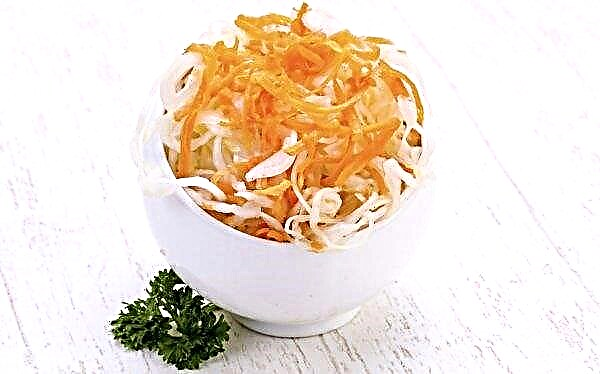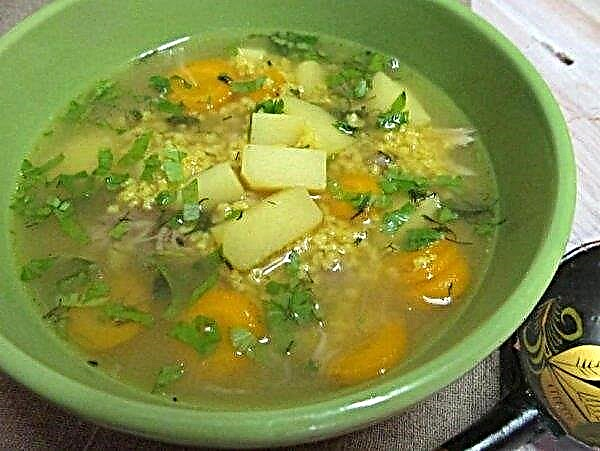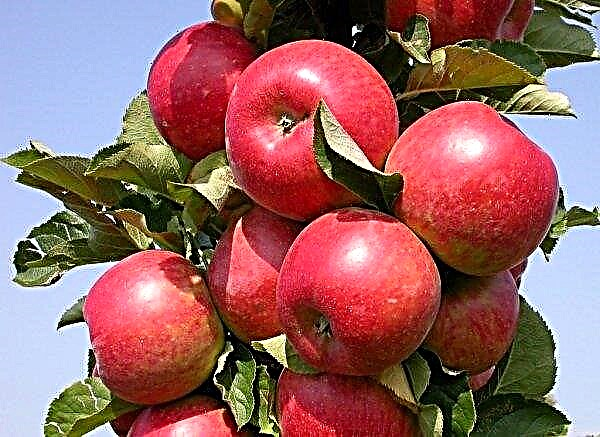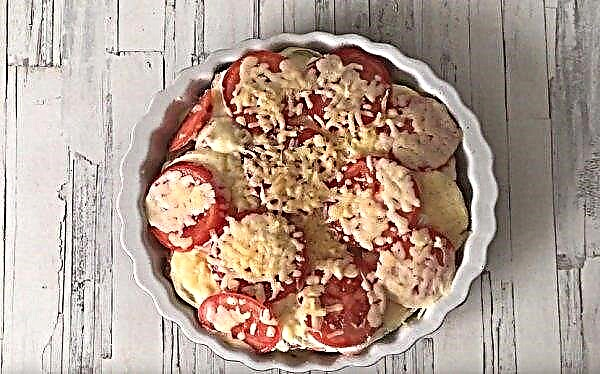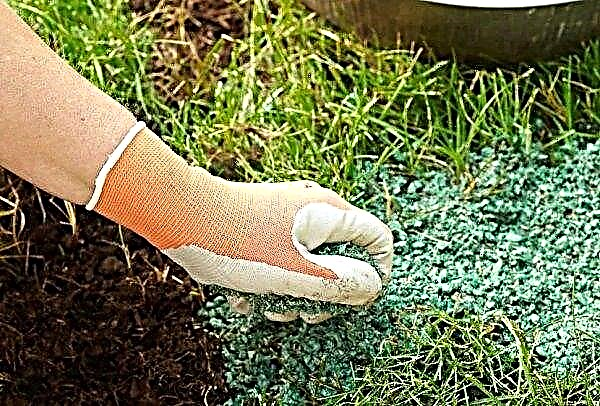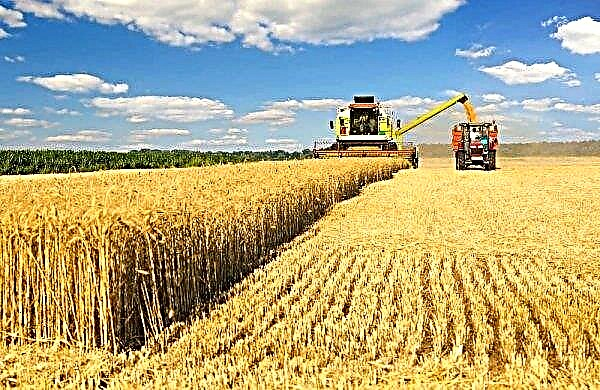The litter in the chicken coop is a very important addition to the house of birds, because it not only makes them more comfortable on the floor, but also makes it easier for the owner to clean the room. Both artificial and organic materials can be used as a litter layer, but the so-called “fermentation deep litter” deserves special attention. Why is it so remarkable and is it really highly effective? You will learn more about this below.
The benefits of using bedding in the chicken coop
Many poultry farmers approve the use of the bedding layer only with the advent of winter, since chickens are much warmer and drier with it. However, choosing what exactly to cover the surface of the floor, you can encounter certain difficulties: the litter should cope with all the responsibilities assigned to it as efficiently as possible, and getting results from the application is far from always obtained. A good example of an almost ideal option is a fermentation substrate, which in comparison with the others has a number of advantages, namely:
A good example of an almost ideal option is a fermentation substrate, which in comparison with the others has a number of advantages, namely:
- perfectly generates heat and eliminates the need for additional heating of the room with artificial heat sources (regardless of the outside temperature, there will always be more than + 30 ° C on the surface of the chicken coop floor);
- does not cause an allergic reaction in humans or animals;
- the beneficial microorganisms contained in it spread throughout the inner space, thereby preventing its colonization by pathogenic microorganisms (as a result of this, the bird is less sick and there is no unpleasant smell in the chicken coop);
- when using such a “warm” litter, one does not need to worry about frequent cleaning of the house, because the bacteria present in it quickly process all the waste products of hens into compost;
- the bird always remains clean and quickly gains mass;
- bowel movements processed into compost can later serve as an excellent fertilizer for plants in the garden.
Important! For 1 square. a meter of the surface, it is necessary to use 1 g of the finished substance of the substrate with the bacteria contained in it.
In addition, when using fermentation litter in large farms, it also saves on the work of maintenance personnel, since such a layer can be replaced only once every six months.
As for the minuses of such a shelter, its rather high cost appears in the foreground, because of which most farmers continue to use less efficient sawdust, hay or other inexpensive materials without any beneficial bacteria inside.
Classification
Each litter layer has its own characteristics, but in order to choose the most suitable option for yourself, you first need to determine your preferences regarding the depth and type of materials used for the future litter.
In depth
The depth of the litter layer directly affects the convenience of moving chickens and the effectiveness of surface insulation, so if the substrate is needed not only for cleanliness, you should immediately determine its thickness. In fact, only two options are possible here: thin and indelible, deep. In the first case, we are talking about a small layer of bulk material on the floor surface, which is used mainly in the summer and is intended to soften the surface and facilitate cleaning. The replacement of such litter (thickness varies between 10-20 cm) will have to be done several times a week, because it is not able to maintain cleanliness for a long time.
In the first case, we are talking about a small layer of bulk material on the floor surface, which is used mainly in the summer and is intended to soften the surface and facilitate cleaning. The replacement of such litter (thickness varies between 10-20 cm) will have to be done several times a week, because it is not able to maintain cleanliness for a long time.
In the case of a deep (non-replaceable) litter, the cleaning process is much simpler. To organize the substrate, 30-50 cm of bedding material is used (for example, sawdust, straw or moss), which in the future, as they become soiled, is simply mixed with droppings, thereby contributing to the natural biochemical processes.
Important! Preparing the chicken coop for winter should begin in the early fall, so the organization of deep litter can be carried out in September, but only in warm and dry weather.
If chickens tamp the surface with their paws, they simply loosen it and add the used bedding material as necessary. By the way, it is precisely in the deep litter that special bacteria contained in fermentation preparations are added, after which an excellent fertilizer is obtained from the used litter.
According to the materials used
Having decided on the required thickness of the future laying for chickens, it's time to move on to choosing a specific material for its organization. Today, the following options are considered the most popular:
- Sawdust. This material is not in vain at the top of the list, because many farmers consider it one of the best in terms of moisture absorption, odor retention and heat production, even without the use of bioadditives. The very inhabitants of the chicken coop willingly rake the sawdust with their paws, perfectly loosening the bedding layer and mixing it with droppings. To encourage this activity of chickens, you can add a little grain to the sawdust, which will cause additional interest from birds. The disadvantages of such material include financial costs for its purchase, of course, if there is no sawmill nearby with free production waste, and the possibility of swallowing by a bird, which is likely to lead to problems with its digestive system (to avoid this, it is worth feeding the birds well, starting to the house with the updated sawdust litter of only fed individuals). Sawdust combines perfectly with other materials, which allows you to get a brand new substrate for the chicken coop. For example, it can be supplemented with moss or hay, as well as take advantage of dry leaves and straw.

- Straw and hay. Despite the fact that they are significantly inferior to sawdust in terms of good “absorbency”, it is much easier to prepare such a litter, because herbs are found everywhere. To increase the comfort of chickens, it is advisable to grind the prepared raw materials to a very fine consistency, which will become an excellent basis for coating. Long dried grass can be laid over sawdust, which will prevent eating the latter (this is especially true when breeding young animals).

- Dry leaves. The most accessible of all the listed materials. Like hay, it is great for creating a bedding layer, and an additional advantage can be considered a high level of accessibility (deciduous trees grow everywhere). The time for leaflet preparation coincides with the period of preparation of the chicken coop for winter, therefore, choosing one of the sunny and dry autumn days, you can start collecting raw materials for future bedding. Having dried the collected leaves well, they can be crushed and filled up on the floor surface.

- Dry moss. This material is a little more difficult to get, but with proper stocking it will be a great option for natural litter. In the dried state, moss acts like a sponge, completely absorbing all the moisture, and its ability to retain odors will serve well both the birds themselves and the farmer. To collect raw materials, it is better to go to marshy areas where it grows in large quantities, but you can dry it in the attic of that very chicken coop. In order to use healthy raw materials more economically, it is recommended to mix them with sawdust.

- Peat. In its independent form, it is used infrequently, but in combination with sawdust it becomes a really good bedding material. Unlike the rest, peat is characterized by high antiseptic properties, so its presence in the chicken coop can prevent outbreaks of infectious diseases throughout the winter period. The main disadvantage of this material is the laboriousness of the extraction process: peat located under the sod layer is well suited for the litter layer, so you have to first remove the layer of turf, and then, after removing the peat, put it in its original place. In addition, the extracted peat must still be properly dried, otherwise it will not be able to serve as a “sponge” for absorbing moisture in the chicken coop.

- Needles. Recently collected and shredded needles are increasingly acting as a litter layer for various farm animals, for which there is a simple explanation: it is not difficult to get it, and the beneficial substances included in the composition will positively affect the health of chickens. However, do not cover the floor with whole needles with sharp edges. To protect birds from injury it is necessary to grind the needles first, it is possible to the state of flour.

Separately, bacterial additives (“fermentation litter” or “bio-litter”) can be distinguished. This achievement of modern biotechnological science is presented in the most diverse form, so you can purchase both expensive and more budget options.
The main feature of such a litter layer is the activity of specific bacteria, which create the main coating layer from a fermented absorbent material and chicken droppings. During this process, a rather impressive amount of heat is released, and the temperature inside the litter can reach +50 ° C.
Unfortunately, in comparison with the previous options, this is the most expensive solution to the problem, so the use of dietary supplements has not yet become a mass phenomenon.
Important! Harvesting needles for the formation of litter or giving the bird as a useful feed additive should be done only when it has the least volatile tannins, that is, from late autumn to mid spring.
The use of biological litter
Biologically active litter can be used not only in the house, but also in sheds with other farm animals, however, in each case it is worth choosing your own version of the product (some manufacturers distinguish between preparations for pigs and compounds for poultry).
The general aspects of the use of fermentation bedding include the need for constant aeration (air flow is vital for living inside microorganisms) and maintaining an acceptable air temperature in the chicken coop, which in this case should not be below +1 ° C (at least at the time of settlement bacteria).
The complete transformation of the substrate occurs within a few years, and in the initial stages of bacterial activity, compost will only be at the very bottom, closer to the floor surface.
As soon as you notice that almost all of the bio-litter has turned into humus, it will have to be replaced, and until that time only digging the top layer will be enough.
Did you know? Some roosters can live even after they have their heads chopped off. For example, in 1945, the most famous feathered bird was a cock named Mike, who lived another 1.5 years with only the base of the brain and one ear.
How to lay a deep litter?
There is nothing complicated in preparing the fermentation litter, the main thing is to temporarily remove the chickens and perform the following steps exactly.
- Regardless of the substrate chosen, wash and sanitize the floor and walls of the house well (the best time is early autumn, when they usually begin to prepare the premises for the wintering of birds). Absolutely all surfaces in the chicken coop are subject to cleaning and disinfection: starting from walls and ending with drinking bowls, feeders and cleaning equipment. If desired, you can whitewash the walls with slaked lime.
- After the preparatory work, it is necessary to prepare the basis for the bedding layer, the role of which is perfectly suitable for sawdust (can be mixed with other organic materials).
- Pour the selected raw materials onto the floor and level them well so that an even coating is formed with a thickness of at least 40-50 cm (if the manufacturer recommends a smaller thickness for starting bacteria, then you can slightly crush the sawdust with your feet).
- Fill the bedding with bacteria by simply scattering a powdery or granular mixture over the entire surface of the chicken coop floor (it is not necessary to wear a protective mask on your face, because the bacteria are completely safe for human health).
- Type in river watering can (tap water does not fit) and putting a spray nozzle on the spout, water the entire surface of the chicken coop floor well.
- Stir the wet litter with a fork or shovel.
Video: how to lay a deep litter
At this stage, the preparatory phase is over and it remains only to wait until the bacteria gain strength and begin their vigorous activity. Usually this happens during the week, which means that it takes so long for you to keep the bird in another place, just watching the state of the bedding.
You can check the readiness of the substrate for the settlement of the inhabitants of the house on the sixth day using a conventional room thermometer: if the temperature in the inner layers of the litter has risen, microorganisms are alive and actively developing.
Important! Some bio-litter does not require wetting with water, which is always reported on the package. In addition, from the instructions you can find out how many grams of a substance is required per 1 sq. Km. a meter of the area of the house and whether there is a need for re-distribution of the powder on the surface of the floor in a few days.
When to run chickens?
The approximate time for launching chickens on a new litter is a week from the moment the litter was organized, but if after 5-6 days you notice a significant increase in temperature inside the litter, then you can populate birds several days earlier than this.
How to care for fermentation litter?
Given that fermentation litter is not just material, but the home of beneficial microorganisms, it is not surprising that it needs some care. The approximate service life of most such substrates is 2-3 years, but so that they accurately serve the time allotted by the manufacturer, It is important to adhere to the following rules:
The approximate service life of most such substrates is 2-3 years, but so that they accurately serve the time allotted by the manufacturer, It is important to adhere to the following rules:
- After laying the sawdust and filling the preparation itself, no work should be performed in the chicken coop for a week, especially loosening the bedding layer.
- After settling the birds, make sure that for 1 square. a meter of area accounted for a sufficient number of chickens, otherwise, due to lack of litter, the bacteria living in the litter will begin to “starve” and then die quickly (though the same thing awaits them when there is an excess of excrement).
- If there are a lot of chickens in the chicken coop, and the straw layer is quickly crushed, then it will have to be loosened more often in order to provide bacteria with an air flow.
- It is possible to place the litter only in a well-ventilated room, because despite the dislike of high humidity, bacteria themselves increase it (this figure should not exceed 60%).
- Once every 4 days, it is worthwhile to increase the air exchange in the bedding by deeply digging the bedding, making sure that no hard crust appears on the floor surface.
- Periodic top dressing will help prevent microbes from starving: in a small container with water, you need to mix 20 g of the substance with 1 kg of sugar and after two hours of infusion, pour the already dug litter with the mixture.
- The use of any disinfectant products on the substrate (including from rodents) is strictly prohibited.
- When using the room only for sleeping chickens, you will have to “feed” the bacteria with excrement of other farm animals, and it is better if it is pig manure.
Did you know? In fact, the smell of pigs is even better developed than that of dogs, and they can also be trained to find drugs and truffles.
Warm litter is a really good solution to the problem of insulating chicken coops in winter, and it doesn’t matter if you grow broilers or use a shed to keep laying hens. Having once spent the money to purchase a dietary supplement, you will provide the birds with good conditions for months and even years.









